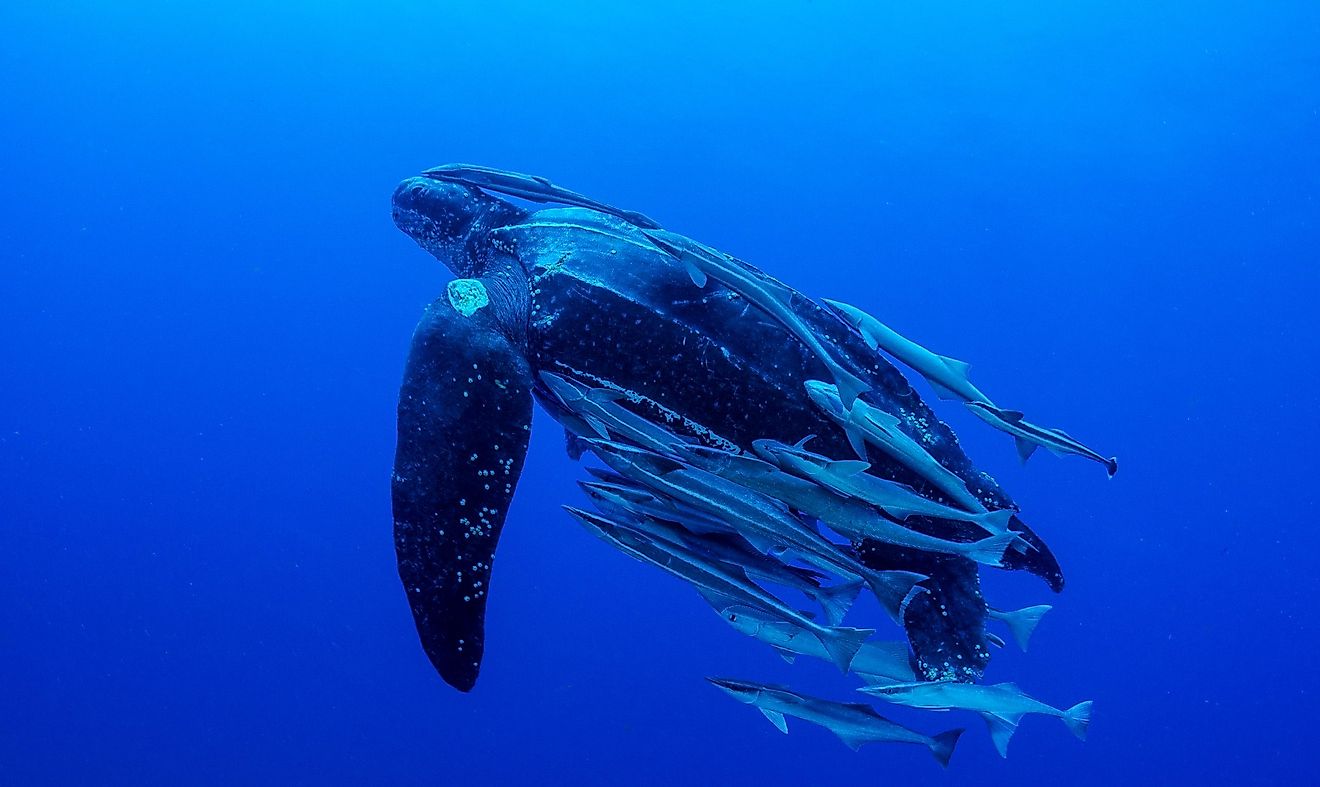Leatherback Turtle Facts

Dermochelys coriacea, also known as the leatherback turtle, is one of the largest reptiles in the world, along with being the biggest of all the sea turtle species. As adults, these impressive animals can reach up to 8 feet long and grow to weigh up to 2,000 lbs. They typically consume enormous amounts of jellyfish, which is the reason why they’re able to grow to such a colossal size. Leatherback turtles had a different evolutionary path than other sea turtle species and diverged from them millions of years ago. One of the other fascinating things about these incredible animals is the structure and adaptation of their mouth that helps them to keep their food from slipping away.
Leatherback’s General Appearance
The giant leatherback turtle is the only sea turtle with a softshell back. Its exoskeleton, called carapace, is flexible and elongated, marked with seven ridges that run down the length of the shell. It does not have scales like other turtles, with the only exception being the hatchlings, but rather a thin layer of rugged, rubbery skin composed of reinforcing bone plates. The shell is usually either black with light spots or dark grey.
Being the largest existing sea turtle, it’s not surprising that they can grow to the astounding weight of 2000 lbs, which also helps them to be quite resilient to the cold. The dark skin across a large surface of the turtle is also of benefit here as it can absorb direct sunlight quite efficiently to combat a cold environment.
Leatherback Turtle and Its Unusual Mouth
If you’ve ever come across photos of the interior of leatherback’s mouth, you were probably under the impression that you’re watching a still from the Alien or some other Giger’s bio-mechanical creation. It turns out that this outwardly mellow looking sea turtle was granted an evolutionary gift in the form of the esophageal papillae. These are tiny sharp prongs made out of cartilage that line the turtle’s entire throat. Their function is to prevent the jellyfish from escaping the mouth while the Leatherback expels saltwater during eating.
These helpful prongs also function as a protective layer from the potential injuries caused by the jellyfish’s stinging cells. The esophagus itself is exceptionally long and aids in continuous digestion; due to their enormous size, leatherbacks need to ingest a lot of food, so the esophagus helps to store the food until it needs to be pushed in to be digested.
Leatherbacks Are Extraordinary Divers
Due to their exoskeleton being soft, leatherbacks are known to be able to dive deeper than the majority of species of whales. They have been known to reach an impressive depth of 3,900 feet, but it seems that it is by no means their maximum. The ability to dive in such deep waters assists in multiple ways: provides a refuge from warm waters, helps avoid larger predators and simultaneously search for food.
Found in the Indian, Atlantic, and Pacific Oceans, leatherbacks are convincingly the most prevalent species of sea turtles in the world. The strong currents and vast open waters are not a deterrent for this resilient animal due to its strong front flippers and advantageous body shape.
Current Status of the Leatherback Turtles
Even though this sea turtle species is widespread, there is a cause for serious concern due to their rapidly declining numbers in the last 100 years. International Union for Conservation of Nature (IUCN) has listed the leatherback as Vulnerable, with many critically endangered sub-populations. The main threats to their survival are the discarded fishing gear, plastic litter, and harvesting of their eggs.











